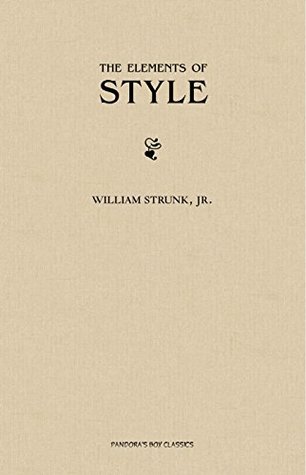More on this book
Community
Kindle Notes & Highlights
Printing Office and of the Oxford University Press. Exceptions are the possessive of ancient proper names in -es and -is, the possessive Jesus', and such forms as for conscience' sake, for righteousness' sake. But such forms as Achilles' heel, Moses' laws, Isis' temple are commonly replaced by the heel of Achilles the laws of Moses the temple of Isis
In a series of three or more terms with a single conjunction, use a comma after each term except the last.
If a parenthetic expression is preceded by a conjunction, place the first comma before the conjunction, not after it.
When the subject is the same for both clauses and is expressed only once, a comma is required if the connective is but. If the connective is and, the comma should be omitted if the relation between the two statements is close or immediate.
If two or more clauses, grammatically complete and not joined by a conjunction, are to form a single compound sentence, the proper mark of punctuation is a semicolon.
Note that if the second clause is preceded by an adverb, such as accordingly, besides, then, therefore, or thus, and not by a conjunction, the semicolon is still required.
As a rule, single sentences should not be written or printed as paragraphs. An exception may be made of sentences of transition, indicating the relation between the parts of an exposition or argument.
Use the active voice. The active voice is usually more direct and vigorous than the passive:
All three examples show the weakness inherent in the word not. Consciously or unconsciously, the reader is dissatisfied with being told only what is not; he wishes to be told what is. Hence, as a rule, it is better to express even a negative in positive form.
Modifiers should come, if possible, next to the word they modify.
Place the emphatic words of a sentence at the end.
Any element in the sentence, other than the subject, may become emphatic when placed first.
Headings. Leave a blank line, or its equivalent in space, after the title or heading of a manuscript. On succeeding pages, if using ruled paper, begin on the first line.
Do not spell out dates or other serial numbers. Write them in figures or in Roman notation, as may be appropriate.
(When a wholly detached expression or sentence is parenthesized, the final stop comes before the last mark of parenthesis.)
Quotations. Formal quotations, cited as documentary evidence, are introduced by a colon and enclosed in quotation marks.
Quotations of an entire line, or more, of verse, are begun on a fresh line and centered, but need not be enclosed in quotation marks.
Syllabication. If there is room at the end of a line for one or more syllables of a word, but not for the whole word, divide the word, unless this involves cutting off only a single letter, or cutting off only two letters of a long word. No hard and fast rule for all words can be laid down. The principles most frequently applicable are: (a) Divide the word according to its formation: know-ledge (not knowl-edge); Shake-speare (not Shakes-peare); de-scribe (not des-cribe); atmo-sphere (not atmos-phere); (b) Divide “on the vowel:” edi-ble (not ed-ible); propo-sition; ordi-nary; espe-cial;
...more


